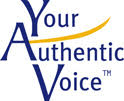
Courtesy of Flickr user Michael Coghlan
You’ve probably taken a communication course or two. You’ve learned the ABC’s of communicating, like restating what you’ve heard, displaying open body language and pausing before you speak. All good stuff.
So, why then do we still have so many challenges? Why can communication be so hard?
What if I said it isn’t hard, or at least it doesn’t have to be. Not if you want to communicate. It’s only hard if you don’t. That probably sounds pretty black and white, and it places the responsibility squarely on our shoulders. However, when you think about it, it’s true. Here’s the caveat — it takes two, or three, or four, or however many are involved. To create understanding and connection, we need a shared intention to understand each other. Given that, here are a few tips that can support us in this effort:
1. Listen to what is being said and ask specific questions. Sometimes, depending on the topic or the person, instead of really listening to what someone is saying, we really just wait for our turn to share our opinion. It takes more energy to truly listen to the other person and engage them. However, if we want something new to emerge, asking specific questions about their information, feelings and needs will open the door to greater understanding.
2. Make the decision to listen without getting offended. This has to be a conscious decision. We all hold beliefs and opinions that are dear to us. If we don’t make room for others to express different beliefs or opinions without getting offended, we can stop communication in its tracks without even knowing it. Effective communication isn’t always about getting agreement. It’s about learning something new and expanding our own awareness. Making the decision to be open to hear that person’s truth, without taking offense, will go a long way toward deepening the relationship, and often results in some form of agreement after all.
3. Get comfortable with discomfort. All too often, when the going gets tough, we try to fix it. We jump in because it’s uncomfortable. If we realize this awkward space could actually be the start of a new understanding or breakthrough, we might not be so quick to fill it up with an expedient solution. Getting comfortable with this “creative tension” is game changing. Trusting that any discomfort we feel can lead to a new and better connection is the key.
What I’ve found is often, when we practice these techniques, the other person will respond in kind. It takes discipline, energy and patience on our part. Most of us aren’t schooled to communicate this way, nor have we had great role models, and effective communication is often not accomplished in one sitting. It helps to bring in a little humor and a lot of compassion as we practice these techniques.
So, when you have a failure to communicate and just don’t know what to do, try these suggestions. If the person you’re communicating with has no interest in reciprocating, then you can decide your next steps. At least you know you’ve done your best. I’d love to know how it goes! If I can support you, please contact me at Andrea@AndreaBeaulieu.com.

Leave A Comment